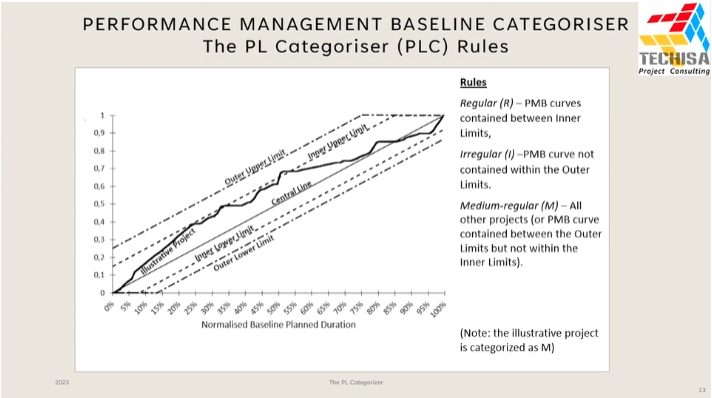Paulo became aware of Earned Schedule in 2007 through course work on his master’s degree. With expertise in technical translation, he translated some of Walt Lipke’s articles and both of his books into Portuguese.
Paulo published articles and gave presentations on Earned Schedule. Some Brazilian companies began using ES, but adoption has been slow. Once use of EVM increases, ES adoption will increase.
Paulo developed Abacus, an Excel spreadsheet, to serve as a demo and instructional tool for ES. It’s available for download from Walt’s Earned Schedule website.
Paulo then developed an executive project reporting service through his company Techisa Abacus. It features an Excel/VBA application that performs ES analysis and presents results in tabular and graphical form.
Paulo conducts research on ES. He’s pursuing a Ph.D. with Prof. Mario Vanhoucke at Ghent University. Paulo’s research focuses on determining the reliability of a project’s forecasted completion. He’s exploring whether or not the shape of the Performance Measurement Baseline (PMB) affects estimate reliability.
Paulo proposed a reliability categorizer based on the PMB shape. First, he created a measure of schedule topology: the degree to which the schedule is serial (S) or parallel (P).

Next, he introduced Batselier and Vanchoucke’s Regularity Indicator (RI). Projects with higher RI yield better forecast reliability than other projects. And, they are more accurate than the SP indicator.

Paulo combined SP and RI to produce a third categorizer, the PMB Limits Categorizer (PLC). Rather than taking a theoretical approach, he pursued an empirical one. He used empirical data and statistical analysis techniques to identify limits for the PMB curves.

Regular (R) PMB curves were contained within Inner Limits. Irregular (I) PMB curves fell outside the Outer Limits. All other curves were called Medium-regular (M). The position of the PMB curve within the limits was determined by its deviation from a central line.
Paulo used the Batselier and Vanhoucke repository of real project data for his research. He extracted 100 projects out of the 133 projects in the data base, using selection criteria developed by Vanhoucke and Martens. He normalized the data and used statistical analysis to identify the central line. From this, he constructed the limits and moved to categorize projects.
Paulo used real data to test the approach. The average curve for the data had an unexpected shape. Rather than an S-curve, it approximated a straight line (with some irregularities). Construction projects constituted 75% of the sample, and they are known to be mostly serial. That accounted for the shape of the curve. And, they became the focus of his additional research.

Paulo applied statistical techniques to smooth out irregularities in the construction data. The smoothed line was the basis for the limits. They are placed at a fixed distance from the central line. The distance varies depending on the data, and a single parameter is used to control variation in the calculations.
Given the limits, Paulo partitioned the sample projects into R and I categories. Further statistical analysis produced a measure of “forecasting goodness”.

Applied to the sample, the categorizers were ranked. PLC showed the best results in categories balance, clustering quality, and correlation. Also, for the R category, the PLC showed the best mean absolute percentage error.
Conclusions: PLC is superior to SP and RI in the study. It best fits construction projects and small projects rather than large ones.
For future research: validate PLC for megaprojects, sectorize the central line and limits (once more data is available), and create guidelines for using PLC in project planning. |